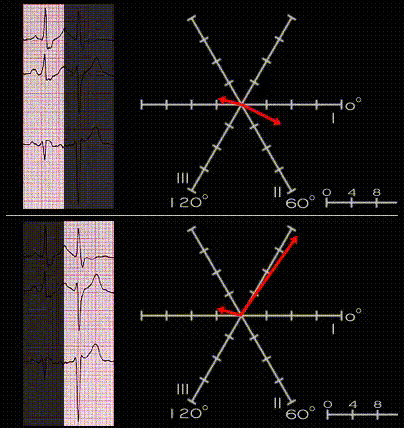
[NEED TO ADD LEADS aVR, AVL and aVF, AND A SMALL INITIAL VECTOR TO THE FIGURE AND THEN ALSO CORRECT THE LOOP IN THE LOWER FRAME] The upper loop represents the non-premature beat. It shows a small initial vector with an axis of +60 degrees, (the small initial R in 3 and aVF), the main vector with an axis of +30 degrees and the terminal vector which represents the right bundle branch block with an axis of +200 degrees. The lower loop represents the premature beat. The initial small vector and the terminal right bundle branch block vector are unchanged, but the main QRS vector has shifted to the left with an axis of -60 degrees.
